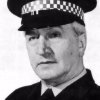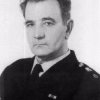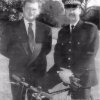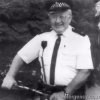Kew Constabulary History
The Royal Botanic Gardens Constabulary (now Kew Constabulary) can trace their history back to the start of Kew Gardens. It was originally policed by the Metropolitan Police, but this changed after 1902. Ex-soldiers from the Boer War were recruited to work as gardeners from 6am to 1pm and constables from 1pm to 4pm. At this point in time, William Aiton was the Head Gardener in charge of policing.
Inspector Thwistleton Dwyer was instrumental in developing the service into a regular police force. His strict approach helped professionalise the body of men carrying out duties such as gate keeping, museum security and general paroling.
Police Sergeant Frederick Albert Ball. In 1977 he controlled five corporals and 34 constables in Kew Gardens. He reported to Honorary Inspector S Brookes and had a keen interest in the force’s history.
Sergeant Ernest Killick started work at Kew on Monday 14 November 1983 and was placed in charge of the constabulary. He had recently retired from North Riding of Yorkshire Constabulary (now part of North Yorkshire Police) after 30 years service. He took up residence in the gardens with his wife.
Head of Security Bob Potter with Constable Edward Ryan in 1995. Bob joined Kew in 1995 to take up the new role of Head of Security which included looking after the Constabulary. He was a Detective Chief Superintendent with the Metropolitan Police until he retired in 1994. Constable Ryan can be seen riding a new mountain bike, introduced to be faster than the previous generation of bikes. He does not have any cycle-specific clothing.
Constable Denis Longley worked at Kew from 1953 to 1997. When he started in the Constabulary he was paid £7 per week for working 51 hours. His duties included collecting money on the gates as well as keeping the peace. In the first part of his career there was no transport for the constables. Later came the introduction of bicycles. He is photographed here with his trusty bike on the eve of his retirement.
Images used with kind permission of The Kew Guild




